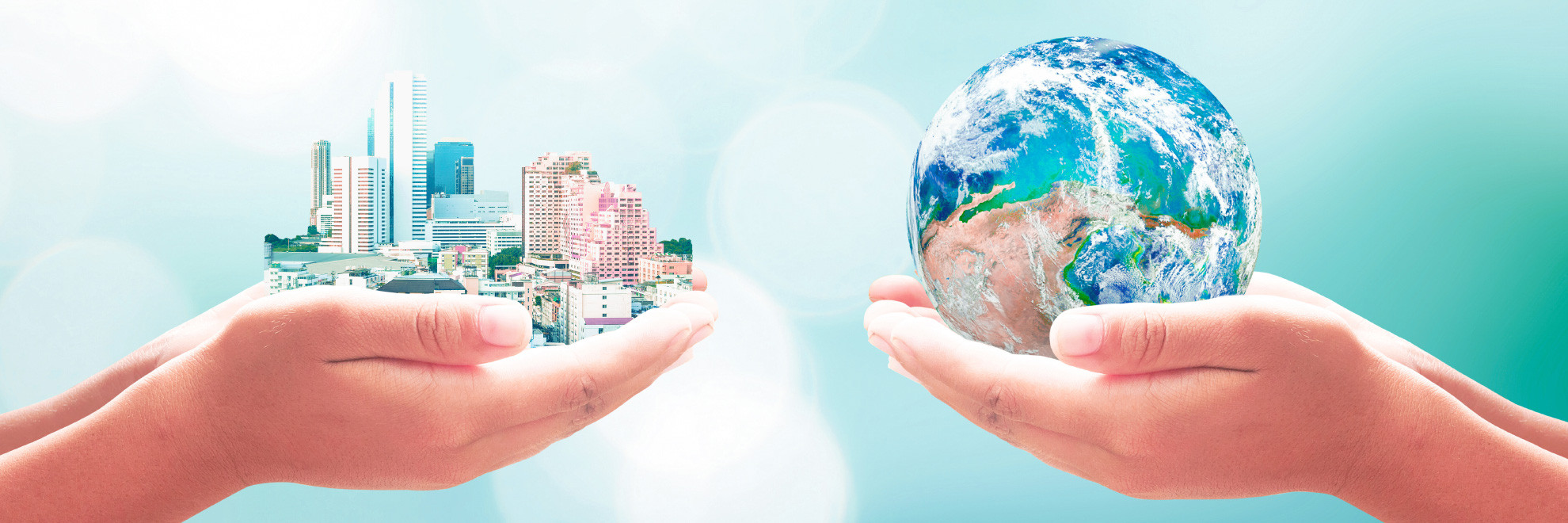Sustainable development is often seen as a recent concept, associated with environmental protection, nature conservation or climate change.
In reality, sustainable development is a long-standing concept that covers many different aspects, each of which cannot be approached independently, but is interconnected with all the others.
In 1983, the United Nations convened the World Commission on Environment and Development to settle on a clear definition of the term. The Commission's report, published in 1987 and entitled "Our Common Future", though often referred to as the "Brundtland Report"* , remains the international, European and Belgian benchmark for the strategic definition of sustainable development.
Sustainable development is development that meets the needs of the present without compromising the ability of future generations to meet their own needs.
It contains two key concepts:
• the concept of 'needs', in particular the essential needs of the world's poor, to which overriding priority should be given; and
• the idea of limitations imposed by the state of technology and social organization on the environment's ability to meet present and future needs.
This definition is made more explicit later in the text:
Yet in the end, sustainable development is not a fixed state of harmony, but rather a process of change in which the exploitation of resources, the direction of investments, the orientation of technological development, and institutional change are made consistent with future as well as present needs.
This process of change (or transition) requires an approach that combines environmental, social and economic interests.
Governments, businesses and citizens all play an important role in this respect, by working together and making strategic choices that protect our current prosperity, well-being and environment, as well as those of our children and grandchildren.
The Brundtland Report also paved the way for the first major United Nations Conference on Environment and Development, held in Rio de Janeiro in 1992. This conference resulted in a number of important conventions, declarations and commitments, most of which are still valid today. These include:
- the Rio Declaration on Environment and Development (which sets out the 27 principles underpinning sustainable development)
- Agenda 21
- the Climate Convention (which led to the Paris Climate Agreement)
- the Convention on Biological Diversity
- the Convention to Combat Desertification
- the Statement of Principles on Forest Management.
The cross-cutting nature of sustainable development was reaffirmed and strengthened when the United Nations General Assembly adopted the 2030 Agenda for Sustainable Development (2030 Agenda) in September 2015.
The ultimate transformation programme aims to bring about sustainable change in our society, our economy and our environment, with the slogan: "Leave no one behind". At its heart, it is built around 17 Sustainable Development Goals (SDGs) and 169 associated targets, which cover societal, ecological and economic aspects, as well as addressing topics such as peace and strong institutions. Collaboration and partnerships are put forward as the levers for achieving these objectives.
The three dimensions of sustainable development (economic, social and environmental) are therefore increased to five, also known as the "5 Ps": People, Planet, Prosperity, Peace and Partnership.
By explicitly including peace as one of the fundamental aspects of sustainable development, the 2030 Agenda restores the link with the Brundtland Report, which stressed that questions surrounding the environment, development and peace are all closely interconnected, and highlighted a number of common global challenges, such as:
- population growth
- food security and supply
- the disappearance of ecosystems and species
- energy issues
- industrialisation
- urbanisation.
All challenges that are more relevant than ever, with others also having been added since.
To find out more, feel free to browse the pages in this section in Dutch or French.
